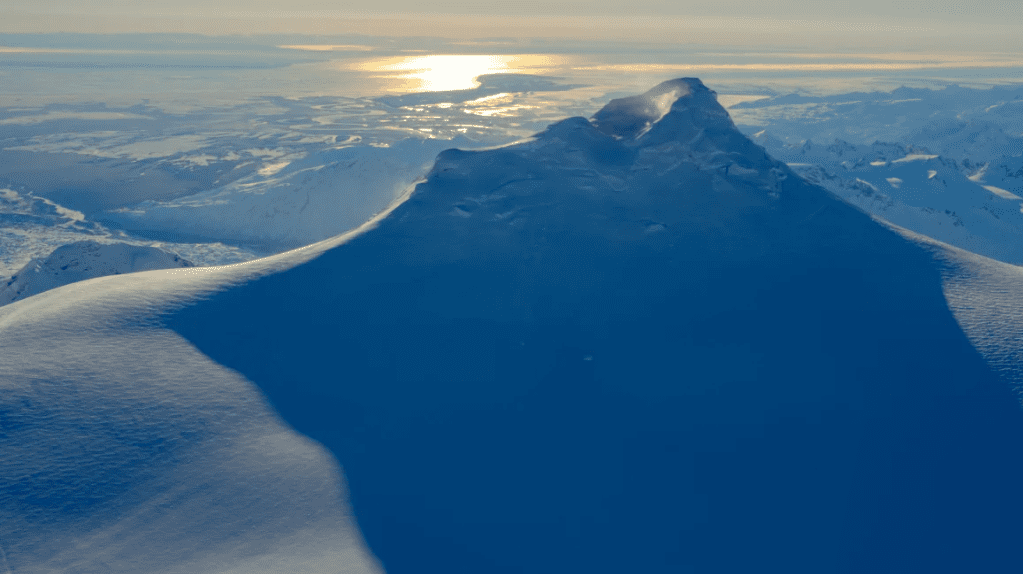
Potential Eruption of Alaska’s Mount Spurr: Experts Weigh In
By Maria Aguilar Prieto, CNN
Recent observations indicate that Mount Spurr, a volcano located roughly 75 miles west of Anchorage, Alaska, may be on the verge of an eruption. Over the last ten months, the mountain has exhibited several signs of unrest, according to experts from the Alaska Volcano Observatory.
The volcano has experienced hundreds of minor earthquakes, highlighting its activity within the volcanically rich Aleutian Arc region. David Fee, a coordinating scientist at the Alaska Volcano Observatory, reported that ground deformations have been detected as magma and fluids push closer to the surface.
“As magma and other fluids rise within the Earth, they cause the ground to swell or deform,” Fee explained in a Saturday interview with CNN. This rising activity may also result in localized heating of the area as the magma ascends.
Fee noted that two key indicators merit attention: the seismic activity and the changes observed at Mount Spurr’s summit, which could signal a looming eruption. Specifically, a small lake has formed in the crater, accompanied by warmer water and gas emissions.
While these developments are noteworthy, experts caution that it remains impossible to predict if or when an eruption will occur, be it in days, weeks, or months. They expect that any impending eruption would likely be preceded by noticeable changes, such as increased water temperatures and widespread melting of snow and glaciers. For now, continuous monitoring is essential.
“Our understanding of previous eruptions helps us gauge what might happen next,” added Fee.
Assessing the Eruption Risk
At present, specialists estimate that there is a 50% chance the volcano will erupt soon. However, due to Mount Spurr’s isolation—there are no nearby communities—the local threat level remains low.
The primary hazards posed by a potential eruption would include ash clouds that could affect air travel and ash fall impacting regional areas, including Anchorage. According to the observatory, “One or more explosive episodes lasting just a few hours could generate ash clouds carried hundreds of miles downwind. The uninhabited zones surrounding Mount Spurr would also be affected by pyroclastic flows, mudflows, and ballistic projectiles."
As of mid-February, the Alaska Volcano Observatory has raised Mount Spurr’s alert level to "advisory," signifying a heightened state of awareness but not an imminent eruption.
“Historically, Mount Spurr has exhibited longer warning periods prior to eruptions,” Fee commented. “We are vigilantly analyzing the data to identify any significant changes that may herald an eruption.”
A Brief History of Eruptions at Mount Spurr
Mount Spurr last erupted in 1953 and had multiple eruptions in 1992, with both years featuring activity at the Crater Peak vent, located just two miles south of the main summit. According to a report by the US Geological Survey, these eruptions were explosive yet relatively small, spreading volcanic ash across large regions of Alaska.
During the 1953 eruptions, ash columns soared up to 65,000 feet into the atmosphere and deposited approximately 6 mm of ash in Anchorage. Notably, one of the eruptions in 1992 led to a 20-hour closure of Ted Stevens Anchorage International Airport, resulting in multiple air quality alerts for several days post-eruption.
Should another eruption occur, experts believe it would likely originate from Crater Peak, as no recent volcanic activity has taken place at the summit itself.
For now, researchers continue to observe Mount Spurr closely, understanding that while the volcano presents potential risks, its remote location mitigates immediate threats to nearby populations.
The-CNN-Wire™ & © 2025 Cable News Network, Inc., a Warner Bros. Discovery Company. All rights reserved.









